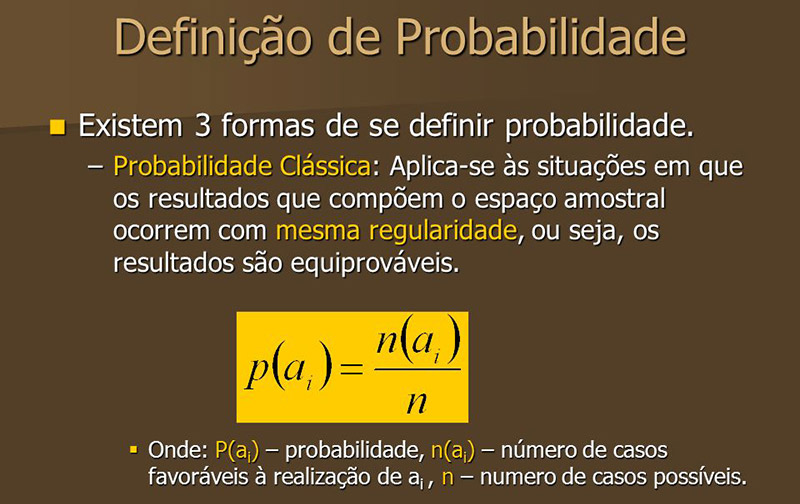ADVERTS
Basic definition of Probability and how to calculate it
What is the probability of you reading this article and leaving here knowing everything about probability, it is 100%, so apply yourself a lot and read this entire article carefully, and you will definitely know everything you need to know about this part of mathematics that will be part of our entire lives.
What is Probability?

Probability is nothing more than a study of something to find out how much of a chance you have of achieving something or not.
ADVERTS
An example of probability is football games, knowing the number of games won, goals scored, goals conceded, among other things that can affect the outcome of a match, you can know the probability of victory for any team, this works for everyone. kind of thing that you can make an account of.
Probability in our daily lives
A major effect of probability theory on everyday life is on risk assessment and trading in commodity markets. Governments often apply probability methods in environmental regulation where it is called “path analysis”, and are often measuring well-being using methods that are stochastic in nature, and choosing projects to commit to based on their likely effect on the population. as a whole, statistically.
An important application of probability theory in everyday life is the issue of reliability. In the development of many consumer products, such as automobiles and electronics, reliability theory is used in order to reduce the probability of failure, which, in turn, is strictly related to the product warranty.
How to calculate probability?
ADVERTS
There is no right way to calculate the probability, what happens is that you must pay attention to all the events and the frequencies that this happens, because if you have a coin it is a fact to say that you have a 50% chance of getting it right if it will fall heads or tails, but in probability you must take into account several things, such as the frequency that one of the sides falls. If you flip a coin 10 times and only take into account both sides of the coin, you should get 5 times heads and 5 times tails, but most likely this should not happen.
By knowing how often each side of the coin falls, you can now have a more certain probability of how much the chances of each side falling are. You must also take into account the last side taken from the coin and analyze whether there is a sequence that that same side came out two or more times, so you have an even greater probability of being right on the next side to fall.
